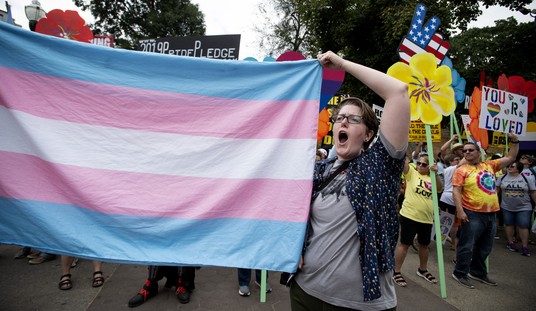President Barack Obama obviously is scrambling in his attempt to win re-election. He has proclaimed himself the underdog and has given up his pretense of being a pragmatic centrist compromiser in favor of harsh class warfare rhetoric.
But it's worth taking note of what he has squandered. In 2008, Obama won 53 percent of the popular vote. That may not sound like a landslide, but it's more than any other Democratic presidential nominee in history except Andrew Jackson, Franklin Roosevelt and Lyndon Johnson.
Higher than Woodrow Wilson and Grover Cleveland, higher than Harry Truman and John Kennedy, higher than Jimmy Carter and (but don't bring up the subject with him) Bill Clinton.
Why have so few Democratic nominees won 53 percent or more, as 10 different Republican nominees have? The historical reason is that the Democratic Party has been an unruly coalition of disparate groups -- big-city Catholics and Southern whites for the century after the Civil War -- which usually has been hard to hold together.
Obama's 2008 coalition included two-thirds of young voters and Latinos, majorities of those earning more than $200,000 and those earning less than $50,000, non-college whites in the upper Midwest, and 95 percent of blacks nationwide. Some obvious tensions there.
Now his strategists feel obliged to pick which groups he'll concentrate on to get back up to 50 percent. What's interesting is that his demographic strategists and his issue strategists seem to be eyeing different groups.
Recommended
The demographic targeters, in their quest for 270 electoral votes, have decided to concentrate on traditionally Republican states that Obama carried in 2008, according to a report in The New York Times. They note that some of these states -- e.g., Colorado, Virginia and North Carolina -- have above-average percentages of college-educated voters, who trended strongly toward Obama.
They add that those three states have more electoral votes (37) than Florida (29) and twice as many as Ohio (18), which were both target states in each of the past three presidential elections. But Ohio and Florida have lower percentages of college-educated residents, and the movement toward Obama compared with past Democrats was relatively minimal.
This may be smart targeting. For years, Democrats have been seeking to regain the majorities they won from blue-collar whites in the days of Franklin Roosevelt and John Kennedy. But they are a declining percentage of the electorate, and it's been a long time since they have given Democrats any majority at all for president.
Statewide polling since June has shown Obama with majority disapproval in Florida (43 percent approves; 53 percent disapproves) and in Ohio (44-52). That supports the view that his chances are tenuous in those states.
But unfortunately for these strategists, recent polls don't show Obama doing much better in Virginia (45-50), North Carolina (45-51) or Colorado (46-50). The Obamaites point to Sen. Michael Bennet's 2010 victory in Colorado as a model to follow. But Bennet won by only 48 to 46 percent, and the Democratic governor won with just 51 percent against split opposition. And Republicans carried the state's popular vote for the House.
There's also an enormous gulf between the so-called Colorado strategy and Obama's stance on issues. It's not clear that lambasting Republicans for not raising taxes on millionaires and corporate jets is going to win votes or rally the enthusiasm of currently disappointed college-educated and young voters.
They may actually have looked past the campaign rally cries of "pass this bill" to notice that it doesn't have 50 votes in the Democratic-majority Senate and indeed has hardly any Democratic co-sponsors. Senate Majority Leader Harry Reid has been employing parliamentary legerdemain to prevent a vote on Obama's bill.
It's not so clear, either, that bashing millionaires and corporate jets is going to rekindle the enthusiasm of young voters and Latinos discouraged after months of joblessness. They may remember that spending hundreds of billions of dollars on the 2009 stimulus package didn't do much good.
At the moment, the only states where polls since June show Obama with job approval as high as 50 or 51 percent are those where he got 60-plus percent in 2008, plus New Jersey, where he got 57 percent.
Those are enough to get him up to 200 electoral votes, 70 short of a majority.
But they're not enough to reassemble the 53 percent coalition that hoped he would bring change for the better. That coalition, historically unusual, seems now to be part of history itself.

























Join the conversation as a VIP Member